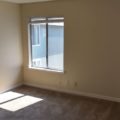As an owner of commercial real estate, you fall into one of two categories…you are either an owner occupant OR a non-owner occupant (investor). You may actually be both as several of our clients own the building that houses their business AND own leased commercial real estate as an investment.
The advice below appeals to BOTH types of ownership structures…owner occupant or investor.
1. Make sure ALL of your AGREEMENTS are current:
Many times, owner occupants do not have a current lease with the entity that occupies the building that they own. After all, why should they? The rent flows from one pocket (you as the tenant) to the other pocket (you as the owner). Part of the beauty of owning your building is the flexibility to charge yourself (within reason) any rent the company can afford. Great!…but put it in writing. You can amend the lease if you need to change a condition. If you are an investor, make sure that your leases and extensions are up to date, that insurance coverages (and your tenant’s) are current and appropriate and that your tenant has maintenance agreements in place for the systems that the tenant is responsible for maintaining.
2. Schedule a PERSONAL visit with your occupant(s):
Easy enough if you are the owner occupant but a bit more time consuming if you are an investor with a multi building, multi state portfolio of real estate. If you cannot personally visit each tenant, make sure that your property manager or broker visits them annually. It is AMAZING to me the things that you learn in these visits…expansion plans, contraction plans, merger inquiries, a change in the tenant’s business positive or negative, etc.
3. Take a look at the CURRENT MARKET conditions:
I have several clients that engage me annually to prepare a broker opinion of value for their real estate. I charge a small refundable fee for the service and rebate the fee if a commission is earned through a future sale or lease. My clients are updated annually on the value of their real estate for estate planning purposes, partner entry or exit, and changes in their businesses direction.
4. REFINANCE:
You heard it here FIRST…actually probably not…BUT, these Eisenhower era interest rates can’t stay this low forever.
5. REVIEW any key dates that will occur this year:
Options to renew, options to purchase, loans that mature, leases that expire, brokerage engagements…understand what they are and when they occur.
6. CREATE a method to track utility expenses:
AB 1103, California’s energy bench-marking law took partial effect in 2013, greater effect in 2014 and continues though 2015. Ultimately, if your building is a certain size and type you will be required by the state of California to report the energy usage of the real estate prior to affecting a lease, purchase or refinance of your commercial real estate. If you occupy owned real estate, this is as simple as accessing your utility bills. If you are an investor and your tenant(s) contract for utilities directly with the provider, you should work toward a sharing of this information. The new AIR lease agreement has a provision for this in a new addendum.
7. Examine any ZONING changes with your property:
In two separate cases, with our clients this year, we have had a zoning change. In one case, the allowable uses were expanded and in another case the allowable uses were contracted. For existing occupants, this shouldn’t be an issue but if your property is vacant, you would be well advised to update your understanding of the allowable uses within your zone.
8. Appeal your PROPERTY TAXES:
This is really more of a down market task (we are solidly in an up market), but it’s always a good idea to see how your property taxes compare with the current values.
9. Competitively BID your building’s services:
You should consider annually looking at your insurance, landscaping, parking lot sweeping, maintenance of the HVAC and roof contracts and competitively bidding the services. These controllable expenses can be reduced when properly managed.
10. Accomplish an annual roof, sprinkler and HVAC service:
The best time of year for annual roof maintenance is in the dry months but NOW is a great time to have your HVAC units serviced before the hot dry months are upon us. Also, take a look at your sprinkler riser that protects the interior of your building. If a certification is required…don’t delay.












